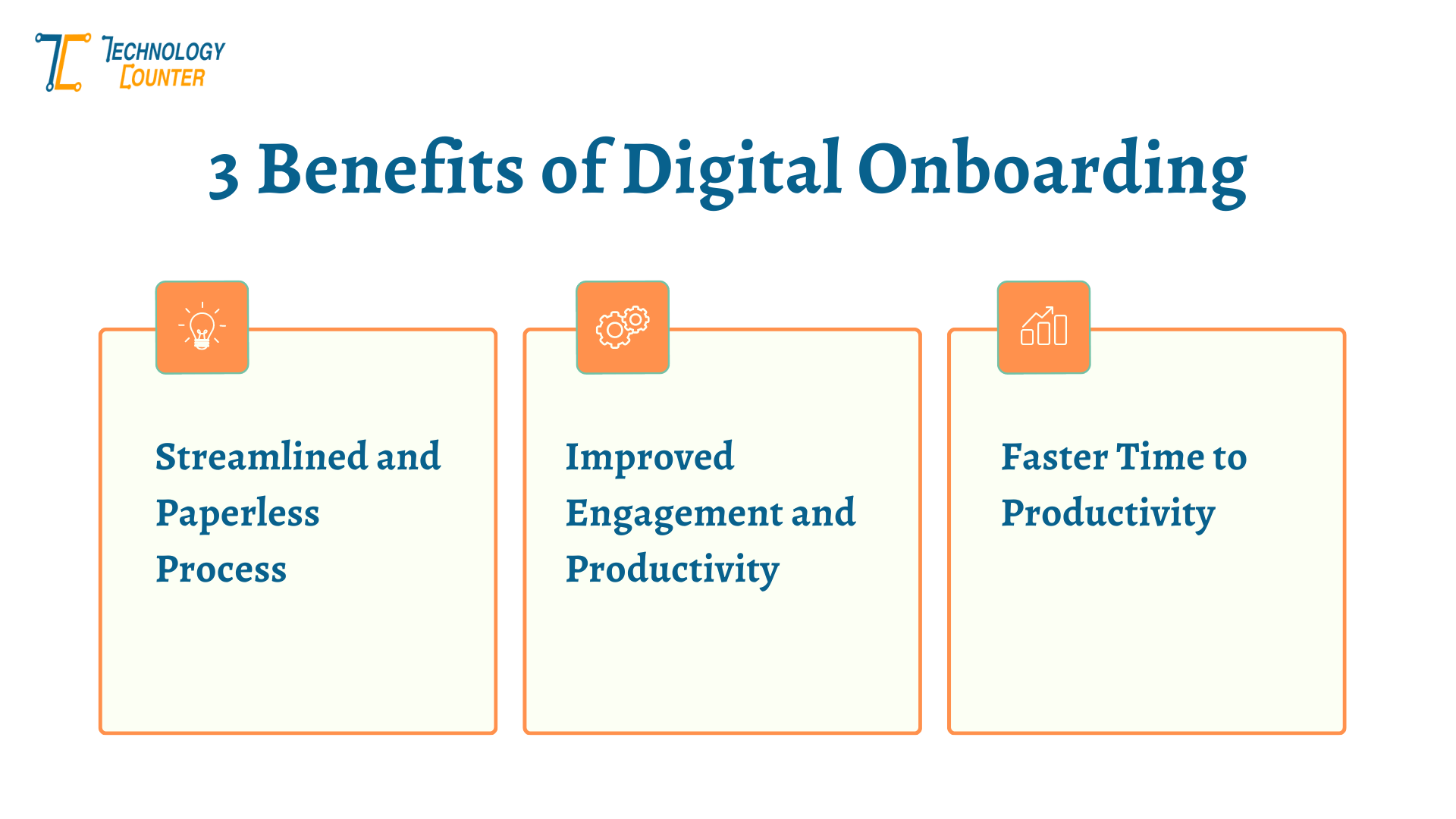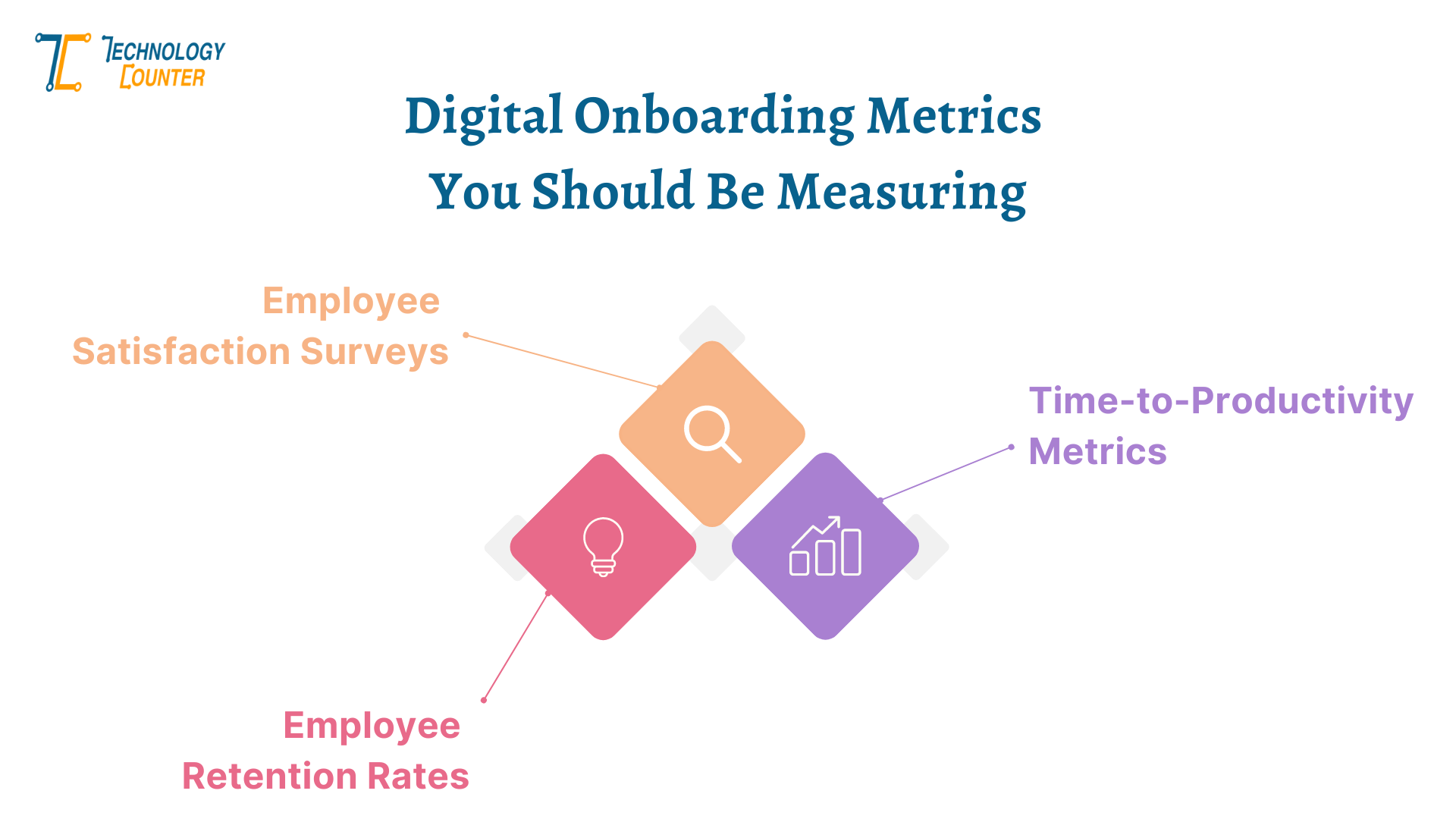Improve employee experience with a seamless digital onboarding process. From remote onboarding to personalized training, discover the key strategies to make a positive impact on your new hires.
In today's fast-paced business world, an organization's success heavily depends on its employees. Ensuring a smooth and efficient onboarding process for new hires is crucial for setting them up for success from day one.
Traditional onboarding methods have their limitations, but with advancements in technology and HRMS tools, digital onboarding has emerged as a game-changer.
In this article, we will explore how to boost employee experience with the digital onboarding process, providing a seamless and engaging transition for new employees.
Digital onboarding refers to the process of integrating new employees into an organization using digital tools and platforms. Unlike traditional paper-based onboarding, digital onboarding leverages technology to automate various HR tasks and create a more engaging experience for new hires.
Employee experience plays a pivotal role in the success of any onboarding process. When new employees feel welcomed, supported, and equipped with the right resources, they are more likely to become productive and committed team members.

1. Streamlined and Paperless Process
Digital onboarding eliminates the need for cumbersome paperwork, making the entire process smoother and more efficient. New hires can complete forms, submit documents, and review policies online, saving time for both the employees and HR teams.
2. Improved Engagement and Productivity
By incorporating interactive elements such as videos, quizzes, and personalized messages, digital onboarding keeps employees engaged throughout the process. Engaged employees are more likely to retain information and feel excited about their new roles.
3. Faster Time-to-Productivity
With digital onboarding, employees can access training materials and resources from day one, enabling them to become productive much faster. This reduces the time it takes for new hires to contribute effectively to the organization's goals.
1. Pre-boarding Preparation
Before the official start date, companies can send pre-boarding materials to new hires. These materials may include a welcome kit, information about the company culture, and instructions on the first-day logistics.
2. Personalized Onboarding Plans
Every employee is unique, and their onboarding experiences should reflect that. Personalized onboarding plans cater to individual needs, strengths, and goals, enhancing the sense of belonging and alignment with the company's mission.
3. Interactive Training and Resources
Digital onboarding platforms offer various training materials in interactive formats. From virtual tours of the office to engaging e-learning system modules, these resources facilitate better learning retention and make the process enjoyable for new employees.
1. Technological Integration
Introducing a digital onboarding process requires integrating different systems and tools seamlessly. Ensuring compatibility and a user-friendly interface is essential to prevent any hiccups during the onboarding journey.
2. Security and Data Privacy
Handling sensitive employee data demands robust security measures. Companies must prioritize data protection to earn employees' trust and safeguard critical information.
3. Balancing Automation and Human Interaction
While automation enhances efficiency, it's crucial not to lose the human touch. Companies should strike a balance between automated processes and opportunities for direct interaction with HR and colleagues.
1. Virtual Welcome and Introductions
In a remote or hybrid work environment, virtual welcome sessions and introductions are vital to building a sense of community among employees. Video conferencing tools can facilitate these interactions, helping new hires feel connected despite physical distances.
2. Mentorship and Buddy Programs
Pairing new employees with experienced mentors or buddies creates a support system and fosters a culture of continuous learning. This approach allows new hires to seek guidance from seasoned team members, accelerating their integration into the company culture.
3. Real-Time Feedback and Support
Digital onboarding platforms can incorporate channels for real-time feedback and support. This two-way communication ensures that employees' concerns are addressed promptly and empowers them to provide valuable input during the onboarding process.

1. Employee Satisfaction Surveys
Conducting surveys to gather feedback from new employees helps organizations understand the effectiveness of their digital employee onboarding system process. Listening to employee opinions and making improvements based on their suggestions fosters a culture of continuous improvement.
2. Time-to-Productivity Metrics
Tracking the time it takes for new employees to reach peak productivity provides insights into the onboarding process's efficiency. By identifying any bottlenecks or areas for improvement, companies can optimize their onboarding strategies.
3. Employee Retention Rates
Successful onboarding significantly impacts employee retention rates. Organizations can analyze retention data to determine whether their digital onboarding efforts are helping retain talent in the long run.
1. Artificial Intelligence in Onboarding
AI-powered onboarding tools can personalize the onboarding experience further by analyzing employee preferences and tailoring content accordingly. Additionally, chatbots can provide instant support and answers to common questions.
2. Gamification for Engagement
Gamification elements, such as leaderboards, badges, and challenges, can make the onboarding process more enjoyable and motivate new hires to actively participate in their learning journey.
3. Virtual Reality Onboarding Simulations
Virtual reality simulations offer immersive experiences that allow new employees to practice real-life scenarios without real-world consequences. This approach is particularly useful for roles that involve high-stakes decision-making.
While digital onboarding offers numerous benefits, it's essential to remember that the human touch remains invaluable. Companies should create a balance between technological advancements and genuine human interaction to ensure a holistic onboarding experience.
A well-executed digital onboarding process can make a remarkable difference in an employee's journey with an organization. By leveraging technology to provide personalized experiences, engaging training, and continuous support, companies can boost employee satisfaction, productivity, and overall success.

Subscribe & get all related Blog notification.
Easily find the ideal software for your business with our extensive software database.
Explore Software
Post your comment